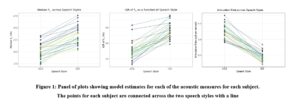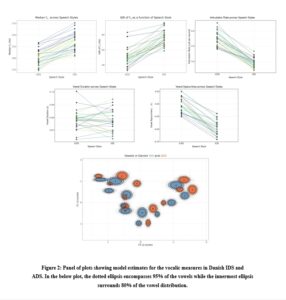Line Burholt Kristensen, Department of Nordic Studies and Linguistics, University of Copenhagen
Marie-Louise Lind-Sørensen, Åbo Akademi University
Prepositions in a second language are notoriously difficult to master (Jarvis & Odlin 2000, Jarvis & Pavlenko 2008). Even advanced learners of Danish as L2 use prepositions in unconventional ways. Unconventional use is also found in texts by native speakers of Danish. Native speaker variation could be due to regional, group-based and individual differences (Brøndal 1940), but may also be caused by crosslinguistic influence, typically from English (cf. Gottlieb 2004).
In this study, we analyze the quantitative and qualitative similarities and differences between preposition anomalies in L1 Danish and L2 Danish. The study is based on two corpora of naturally occurring texts: 27 essays by Danish high school students (a total of 42.132 words) and 28 texts by students studying Danish at a language school in Copenhagen (CEFR level A2- B1), who have English as their L1 (5.685 words). We compare the frequency and types of anomalies for four frequent prepositions in Danish: til, i, på and for. These four prepositions have a partial semantic and distributional overlap with the English prepositions to, in, on and for.
The results show that preposition anomalies are 10 times more frequent in the L2 texts, but that both L1 texts and L2 texts exhibit cases of:
-
- omitted prepositions, e.g. omitted på in tvivler [på] om (English translation: ’doubt [on] whether’),
- superfluous prepositions, e.g. anomalous use of til in besøge til, (English translation: ‘visit to’),
- confusion of two prepositions, e.g. anomalous use of fra instead of af in glemt fra [-> af] deres familie (English translation: ‘forgotten from [->by] their family’).
Some anomalies are characteristic of L2 texts, e.g. overgeneralized use of til and i. Other anomalies appear to be exclusive to L1 texts. Crosslinguistic influence seems to occur in both L1 and L2 texts, but with differential manifestation, such that L2 users seem more affected by phonological similarities between Danish and English than L1 users (cf. Haspelmath 2009).
We discuss the similarities and differences in the conventional use of prepositions on the basis of syntactic and semantic analyses, focusing on valency bound prepositions and spatialtemporal prepositions.
References
Brøndal, Viggo. 1940. Præpositionernes Theori. Indledning til en rationel Betydningslære. København: Ejnar Munksgaard.
Gottlieb, Henrik 2004. Danish echoes of English. Nordic Journal of English Studies, 3(2), 39–65.
Haspelmath, Martin. 2009. II. Lexical borrowing: Concepts and issues. I Haspelmath, Martin and Tadmor, Uri (red.) Loanwords in the World’s Languages: A Comparative Handbook, Berlin, New York: De Gruyter Mouton.
Jarvis, Scott & Terence Odlin. 2000. Morphological type, spatial reference, and language transfer. Studies in Second Language Acquisition 22(4). 535–556.
Jarvis, Scott & Aneta Pavlenko. 2008. Crosslinguistic influence in language and cognition. New York & London: Routledge.
Lund, Karen. 1997. Lærer alle dansk på samme måde? Specialpædagogisk forlag.


